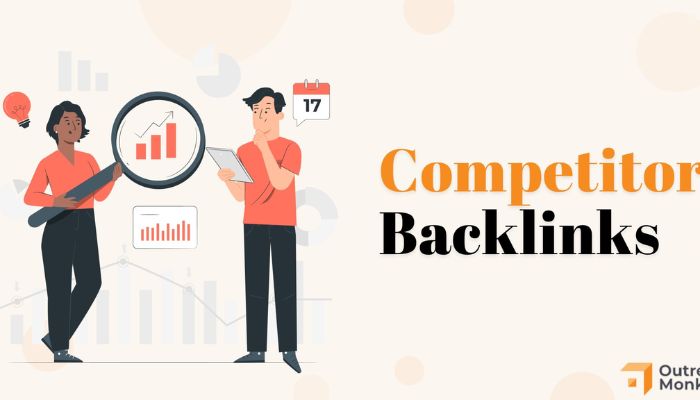As an SEO expert with over 7 years of experience, I’ve seen the backlink analysis landscape evolve rapidly over the years. In 2024, mastering backlink analysis will be more important than ever for succeeding with SEO. Read below about “Mastering Backlink Analysis Tools and Techniques in 2024”.
In this post, I’ll share my insider knowledge on the latest and most effective backlink analysis tools and techniques that every SEO practitioner should have in their toolkit for 2024 and beyond.
Table of Contents
The Importance of Backlink Analysis
But first, let’s do a quick recap on why backlink analysis is so crucial for SEO.
Google’s algorithm relies heavily on backlinks to determine a website’s authority and relevance for ranking purposes. The quantity and quality of backlinks pointing to your site from external sources acts as votes of confidence. So the more high quality backlinks you can accumulate, the better Google perceives your site’s expertise and trustworthiness.
This is why doing regular backlink analysis is essential – it allows you to identify new link building opportunities, assess the strength of existing backlinks, monitor for toxic links that need to be disavowed, and gauge how your overall link profile is shaping up compared to competitors.
Knowing how to leverage the best backlink analysis tools and techniques will give you the actionable insights needed to optimize your link building and outperform rivals in SERP rankings.
Top Backlink Analysis Tools in 2024
In 2024, these will be the go-to backlink analysis tools that every seasoned SEO professional needs to have in their toolkit:
- Ahrefs – The leader when it comes to backlink data and metrics. Ahrefs crawls over 10 billion web pages monthly to offer unparalleled coverage of backlinks pointing to any domain. It also provides powerful filtering to segment backlinks by type, anchor text, domain authority and more.
- Semrush – Another robust backlink analysis tool that lets you dig deep into your own backlink profile as well as those of competitors. Semrush’s backlink audit is great for identifying toxic links.
- Majestic – Majestic has the largest link index of any tool at over 1 trillion URLs. This makes it the best for analyzing backlinks pointing to extremely large sites. It also offers historical backlink data.
- Moz – Moz’s Link Explorer lets you analyze backlinks with metrics like Domain Authority and Page Authority. Useful for gauging the relative strength of link sources.
- Google Search Console – Free backlink data directly from Google. Limited in scope but still useful for tracking toxic links, manual penalties, and other issues.
- Linkody – Specialized for link opportunity discovery. Linkody uses machine learning to identify untapped prospects for earning backlinks from relevant websites.
- BuzzStream – Helps streamline outreach to earn backlinks from the prospects identified through other tools. BuzzStream’s automation makes large-scale link-building campaigns more manageable.
As you can see, each tool has unique strengths. The best practice is using a combination of tools to get the fullest picture of your current backlink profile and new link-building potential.
Mastering Core Backlink Analysis Techniques
In addition to leveraging the right tools, you also need to master these core backlink analysis techniques for optimal insights:
- Compare metrics like Domain Authority and Page Authority between your backlinks and competitors – This reveals gaps where they may have stronger backlinks that you can aim to replicate or outperform.
- Analyze inbound link growth over time – This shows the pace you need to maintain or exceed to outrank competitors who are aggressively building links.
- Identify toxic links pointing to your site – These are low quality links from spammy or irrelevant sites that can harm your site’s reputation with Google. Disavowing them protects your rankings.
- Uncover bad anchor text patterns – An over-optimization of exact match anchor text links can appear manipulative. You want a natural mix of anchor text including branded and naked URLs.
- Find broken backlinks pointing to 404 pages – Contact these sites to request fixes or redirects to working pages on your site, thus preserving the SEO value of the backlinks.
- Categorize backlinks by type – Analyze the mix of editorial links, guest posts, directory listings, etc pointing to your site. Too much reliance on one type of link is risky.
Check to see which pages are getting the most backlinks. This will show you your best content assets to build on, as well as pages that don’t have any links to them and need more work on building links.
Keep an eye on your link velocity, or how quickly new backlinks have been adding up over the last 30/90/365 days. By optimizing this, you can keep your rankings.
By using these methods, you can get strategic information on how to improve your overall link profile and do better than your competitors in 2024 and beyond.
Actionable SEO Link Building Strategies
Now let’s talk about link-building strategies that can be used, based on advanced backlink analysis:
- Add more assets that are worth linking to: Find the kinds of pages, content, and assets that get your competitors a lot of backlinks, and then work on making more of those things yourself.
- Fix Up Old Pages: Check to see which of your pages aren’t getting enough backlinks compared to your competitors. Spend money on making those pages better and promoting them to get more backlinks.
- Smarter Outreach: Use backlink data to find websites that link to your competitors but not to you. Then, you can focus your outreach efforts on those websites.
- Spread out the types of backlinks you have. Don’t rely too much on one type of link, like guest posts. Get a wide range of links by reaching out, promoting your content, listing your site in directories, and other things.
- Disavow Toxic Links: Always keep an eye out for bad links from low-quality sites, and use Google Disavow to keep your rankings safe.
- Fix Broken Backlinks: Get in touch with any sites that are linking to your 404 pages and ask them to change the links to active pages or redirect them.
- Monitor Link Velocity: Look at how fast new links are being added and try to keep up with or beat that rate through constant outreach and promotion.
- With the Right Backlink Analysis: you can make a strategy that will help you build the kind of high-quality, natural links that Google wants to see in 2024.
Key Takeaways for Mastering Backlink Analysis
As we move into 2024, here are the most important things you should remember about mastering backlink analysis:
- To look at backlinks from every angle, use Ahrefs, Semrush, Majestic, and other specialized tools.
- When you look at your competitors’ backlink profiles and growth, you can learn how to improve your own.
- Use different strategies to build a variety of backlink types.
- Regularly check for harmful links and remove them if you find any.
Conclusion
Put what you’ve learned into action by making assets that are worth linking to, fixing broken links, reaching out to beat competitors, and keeping link velocity high.
By learning how to use the newest backlink analysis tools and methods described here, you will be able to check your current links, find new opportunities, and create an optimized backlink profile that will help your site rank higher in search engines. This will help you have long-term SEO success in 2024 and beyond.

Shivam Mishra is the lead writer at webcourses.in, where he shares his expertise in web development, particularly in the MERN stack (MongoDB, Express.js, React, Node.js). With a solid foundation in Java and Data Structures & Algorithms (DSA), Shivam creates content that resonates with developers and tech enthusiasts alike. As a former Web Development Club Captain, he has led projects like an Air-BNB replica and a YouTube clone. Recognized as a two-time CODE-Hunt winner and LinkedIn Top Voice in Web Development, Shivam brings a wealth of knowledge to every article.
Connect with Shivam on LinkedIn.

